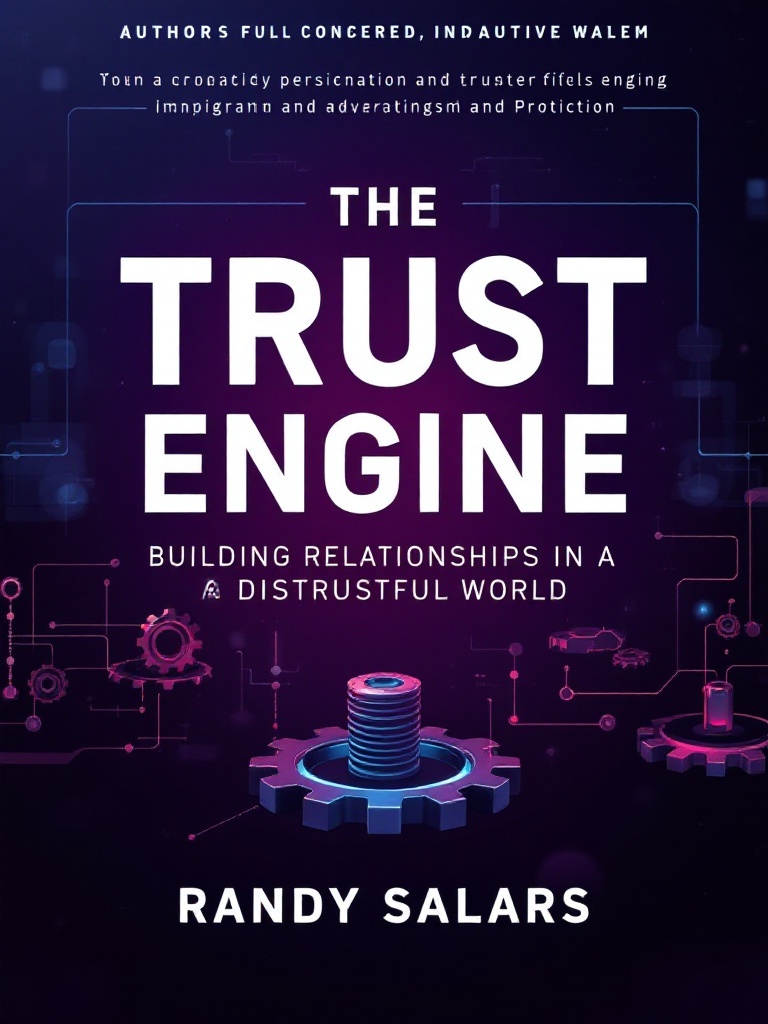Scarcity Framing in Dialogue
$0.00
Unlock the power of persuasion with “Scarcity Framing in Dialogue”! This groundbreaking book delves into the psychology of scarcity and its incredible influence on communication and decision-making. Discover how to master the art of framing conversations to evoke urgency and desire, whether in personal interactions, marketing, or negotiations.
Packed with practical techniques, real-world examples, and insightful research, this book empowers readers to harness scarcity effectively while maintaining ethical integrity. Unique in its approach, it offers a fresh perspective on dialogue, making it an essential read for marketers, leaders, and anyone looking to enhance their communication skills.
Transform your conversations and drive action like never before! Don’t miss your chance to elevate your influence—grab your copy of “Scarcity Framing in Dialogue” today and start mastering the art of persuasive communication.
Description
Unlock the Power of Persuasion with “Scarcity Framing in Dialogue”
Transform Your Conversations and Influence Outcomes Like Never Before!
Are you tired of conversations that fizzle out before they spark excitement? Do you want to master the art of persuasion and make your words carry weight? In his groundbreaking book, Scarcity Framing in Dialogue, Randy Salars reveals the secrets behind the powerful psychological principle of scarcity and how it can elevate your dialogue to new heights.
Key Benefits of Reading This Book:
– Master Persuasion Techniques: Learn how to frame your ideas in a way that creates urgency and compels action.
– Enhance Your Communication Skills: Discover proven strategies to engage your audience and keep them invested in your message.
– Boost Your Influence: Transform mundane conversations into impactful dialogues that resonate and inspire.
– Achieve Your Goals: Leverage scarcity principles to facilitate negotiations and close deals with confidence.
What You’ll Learn:
In Scarcity Framing in Dialogue, you will dive deep into the art and science of dialogue that captivates. This book will guide you through:
– The psychology of scarcity and how it influences decision-making.
– Techniques to frame your dialogue for maximum impact.
– Real-world examples and case studies that demonstrate scarcity in action.
– Practical exercises to apply what you learn in everyday conversations.
– How to ethically use scarcity to foster trust and rapport with your audience.
About the Author:
Randy Salars is a seasoned entrepreneur, digital strategist, and former U.S. Marine, bringing over 40 years of leadership and business expertise, sharing his knowledge to inspire success across traditional and digital industries. His unique blend of experience positions him as a leading voice in the realm of communication and persuasion.
What Others Are Saying:
“Randy Salars delivers a masterclass in persuasion! His insights on scarcity have transformed my approach to dialogue—this book is a must-read for anyone looking to elevate their communication skills!”
— Jamie T., Marketing Executive
“With Scarcity Framing in Dialogue, Randy has created a roadmap for anyone wanting to be heard and understood. This book is packed with actionable strategies that really work!”
— Alex R., Small Business Owner
“As a trainer, I found Randy’s techniques invaluable. His ability to simplify complex concepts into practical advice is remarkable. Highly recommend!”
— Morgan P., Corporate Trainer
Don’t Miss Your Chance!
Are you ready to take your conversations to the next level? Don’t let this opportunity slip away! Grab your copy of Scarcity Framing in Dialogue by Randy Salars today and start transforming your dialogues into powerful, persuasive conversations that lead to success.
[Purchase Now and Unlock Your Potential!](#)
Embrace the power of scarcity—your conversations will never be the same!
What You’ll Learn:
This comprehensive guide spans 157 pages of invaluable information.
Chapter 1: Chapter 1: Understanding Scarcity
– Section 1: The Concept of Scarcity
– Section 2: Psychological Impacts of Scarcity
– Section 3: Historical Perspectives on Scarcity
– Section 4: Scarcity vs. Abundance Mindsets
– Section 5: Case Study: The Impact of Scarcity in Marketing
Chapter 2: Chapter 2: The Mechanics of Scarcity Framing
– Section 1: Definition of Framing
– Section 2: Types of Scarcity Framing
– Section 3: Techniques for Effective Scarcity Framing
– Section 4: Ethical Considerations
– Section 5: Case Study: Political Campaigns and Scarcity Framing
Chapter 3: Chapter 3: Scarcity in Personal Relationships
– Section 1: The Role of Scarcity in Attraction
– Section 2: Communication Strategies
– Section 3: Navigating Scarcity in Conflict
– Section 4: Emotional Intelligence and Scarcity
– Section 5: Case Study: Navigating Scarcity in Family Dynamics
Chapter 4: Chapter 4: Scarcity in Business Negotiations
– Section 1: The Importance of Scarcity in Negotiations
– Section 2: Creating Scarcity in Business Offers
– Section 3: Recognizing Scarcity Tactics in Others
– Section 4: Collaboration vs. Competition
– Section 5: Case Study: A Successful Business Negotiation
Chapter 5: Chapter 5: Scarcity in Public Discourse
– Section 1: The Role of Scarcity in Media Messaging
– Section 2: Public Response to Scarcity Framing
– Section 3: Scarcity in Social Movements
– Section 4: The Impact of Digital Communication
– Section 5: Case Study: Social Media Campaigns
Chapter 6: Chapter 6: Scarcity and Cultural Differences
– Section 1: Cultural Perceptions of Scarcity
– Section 2: Cross-Cultural Communication Challenges
– Section 3: Adapting Scarcity Framing
– Section 4: The Role of Language in Scarcity Framing
– Section 5: Case Study: International Business Negotiations
Chapter 7: Chapter 7: Scarcity in Education
– Section 1: The Role of Scarcity in Learning Environments
– Section 2: Teaching Scarcity Framing
– Section 3: Scarcity in Academic Competition
– Section 4: Communication Techniques for Educators
– Section 5: Case Study: Implementing Scarcity in a Classroom
Chapter 8: Chapter 8: The Neuroscience of Scarcity
– Section 1: How Scarcity Affects the Brain
– Section 2: Scarcity and Cognitive Load
– Section 3: Emotional Responses to Scarcity
– Section 4: The Role of Hormones in Scarcity
– Section 5: Case Study: Neuroscience Research on Scarcity and Decision Making
Chapter 9: Chapter 9: Future Trends in Scarcity Framing
– Section 1: The Impact of Technology on Scarcity Perception
– Section 2: Scarcity in the Age of Information Overload
– Section 3: The Evolution of Consumer Behavior
– Section 4: Predicting Future Scarcity Trends
– Section 5: Case Study: A Look at Emerging Technologies
Chapter 10: Chapter 10: Practical Applications of Scarcity Framing
– Section 1: Developing Your Scarcity Framing Skills
– Section 2: Integrating Scarcity Framing in Everyday Dialogue
– Section 3: Assessing the Impact of Scarcity Framing
– Section 4: Building Resilience Against Manipulation
– Section 5: Case Study: Personal Growth Through Scarcity Awareness





